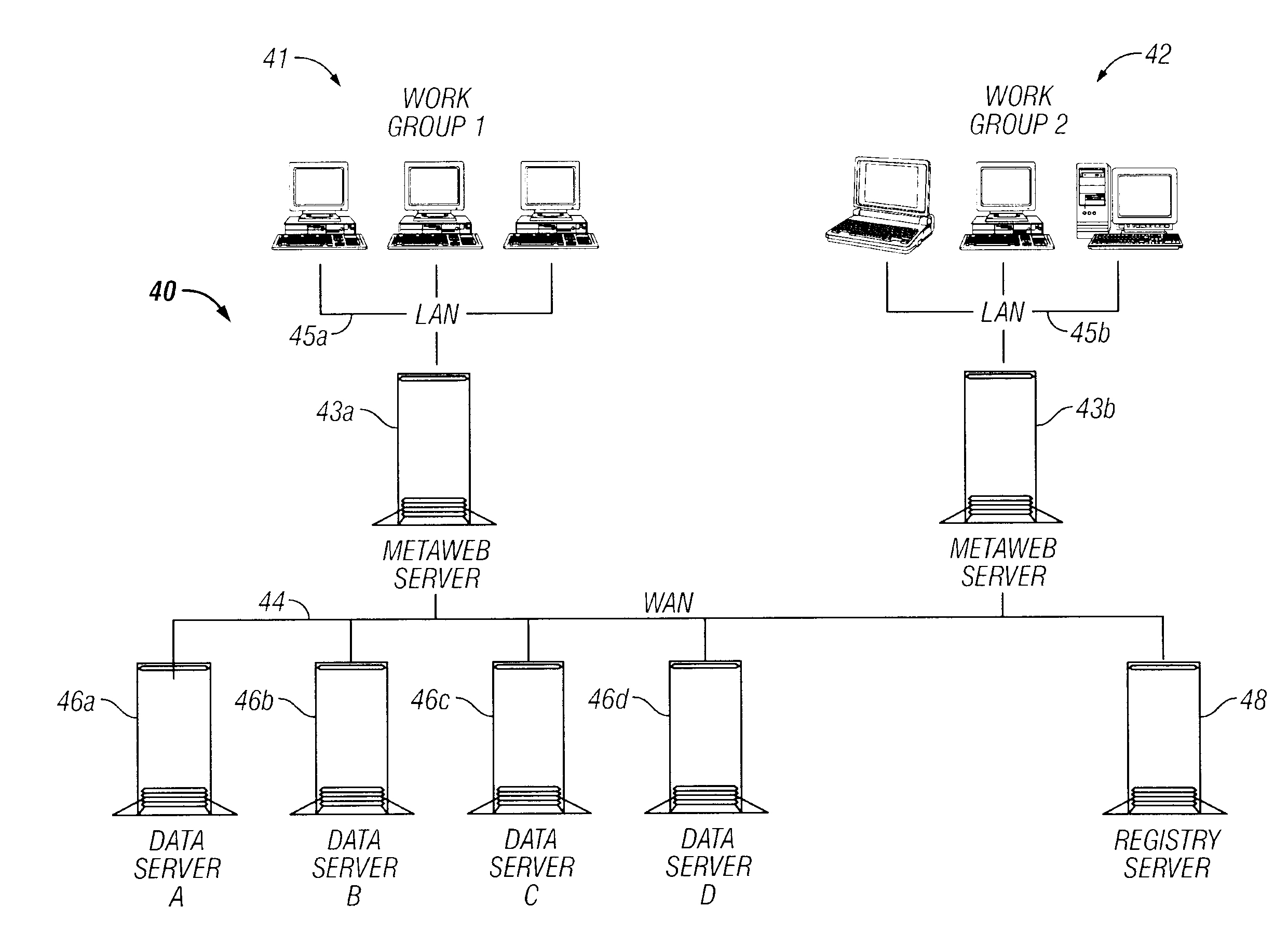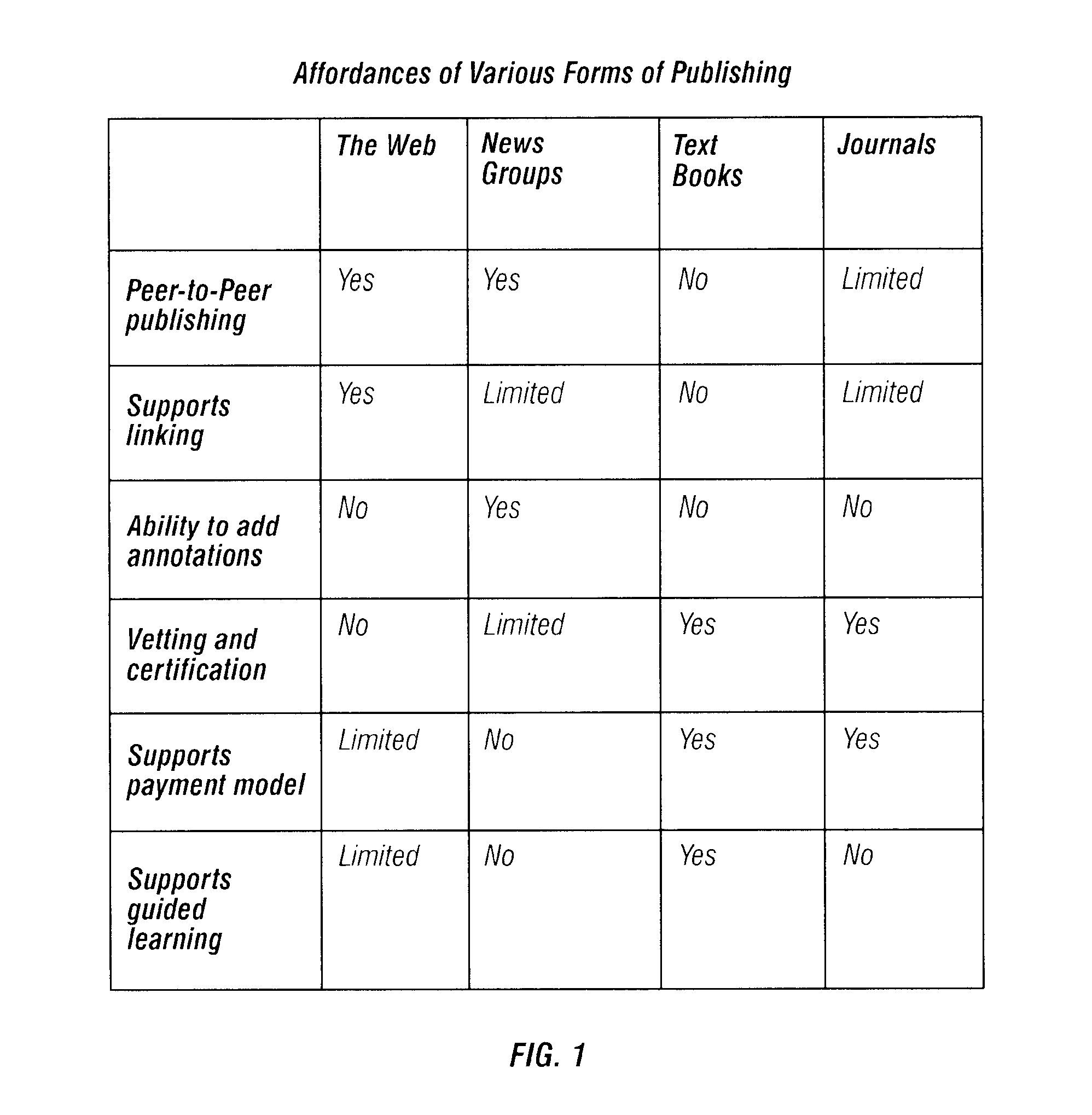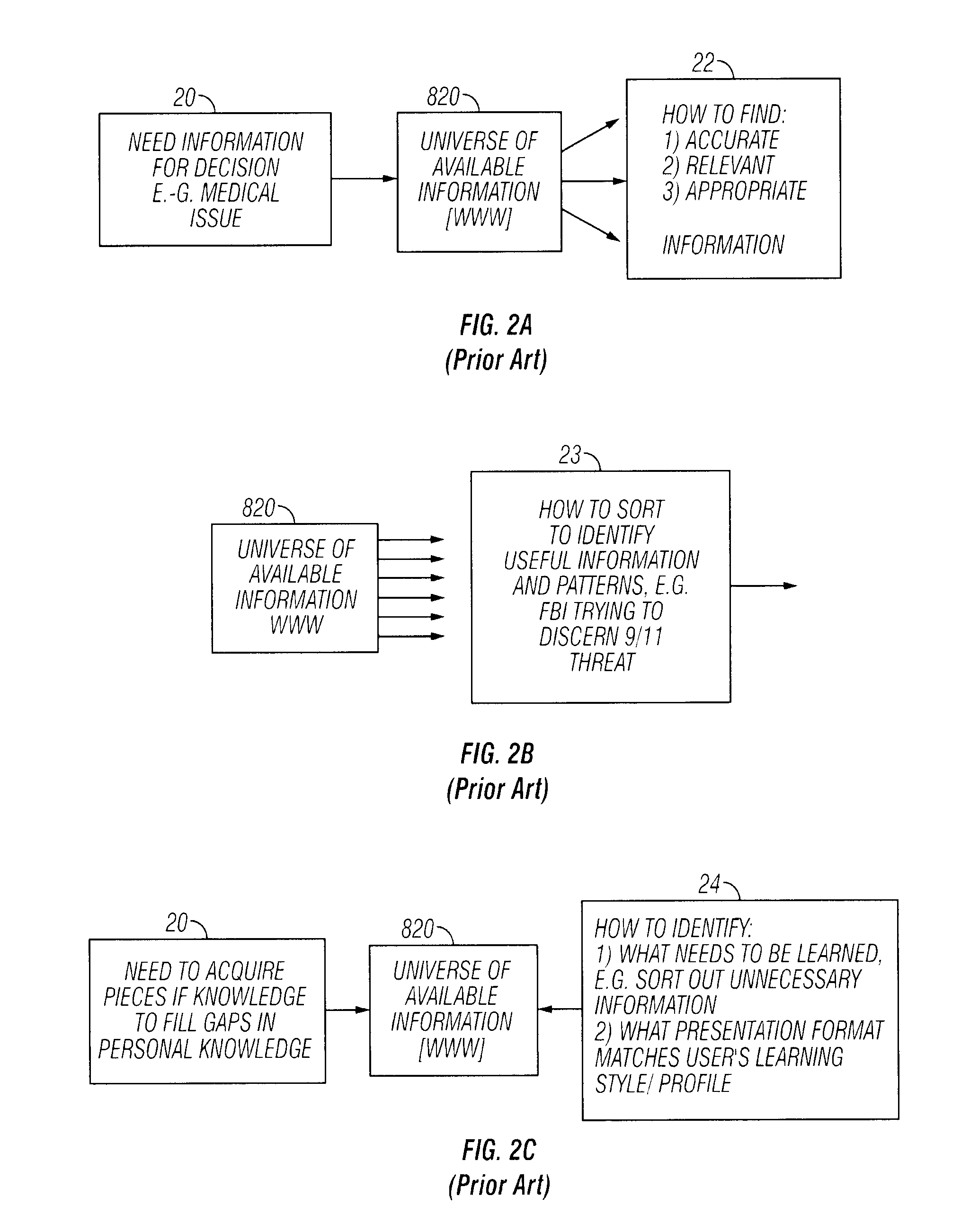Knowledge web
a knowledge web and knowledge technology, applied in the field of knowledge, can solve the problems of not being able to keep up with the broader knowledge, the inability of experts to keep track of broader knowledge, and the inability of college education to provide an overview of knowledg
- Summary
- Abstract
- Description
- Claims
- Application Information
AI Technical Summary
Problems solved by technology
Method used
Image
Examples
example 1
A Lesson from Dr. Feynman
[0085]If a user wanted to learn about the principle in quantum mechanics called Bell's Inequality, he has several options. The user could read about it in any of several books on quantum mechanics. He could read the original paper describing it, or any of several papers that discuss it. The user could read articles on the Web that discuss Bell's Inequality. Which of these options is right? Are there other options to learning that he is unaware of? Is there a learning path he should take that would prepare him to understand Bell's Inequality? A personal tutor, if the user had one, might be able to help.
[0086]For example, there is a short film of Dr. Richard Feynman explaining Bell's inequality. Most people have little interest in quantum mechanics and no interest at all in understanding Bell's inequality, and would not understand or be interested in this film. On the other hand, most quantum physicists already understand Bell's inequality, and would learn lit...
example 2
The Physician's Dilemma
[0098]Imagine that the user is a physician who wants to treat a patient who has an unusual disease. A standard medical education probably treats the topic superficially, if at all. The user is thus faced with a few unsatisfactory alternatives. He might consult a specialist, but if he does not know much about the field it is difficult to know what kind of specialist is needed. The user could try reading a specialized textbook, but such a textbook is likely to be out of date, so he also has to find the relevant journals to read about recent developments. If he finds them, they almost certainly are written for specialists and are difficult for the user to read and understand. Given these unsatisfactory choices, the user may go ahead and try to treat the disease without the benefit of the best knowledge.
[0099]With the knowledge web, one can make the transition from a qualified general practitioner lacking specialized knowledge to a more fully informed specialist i...
PUM
 Login to View More
Login to View More Abstract
Description
Claims
Application Information
 Login to View More
Login to View More - R&D
- Intellectual Property
- Life Sciences
- Materials
- Tech Scout
- Unparalleled Data Quality
- Higher Quality Content
- 60% Fewer Hallucinations
Browse by: Latest US Patents, China's latest patents, Technical Efficacy Thesaurus, Application Domain, Technology Topic, Popular Technical Reports.
© 2025 PatSnap. All rights reserved.Legal|Privacy policy|Modern Slavery Act Transparency Statement|Sitemap|About US| Contact US: help@patsnap.com



